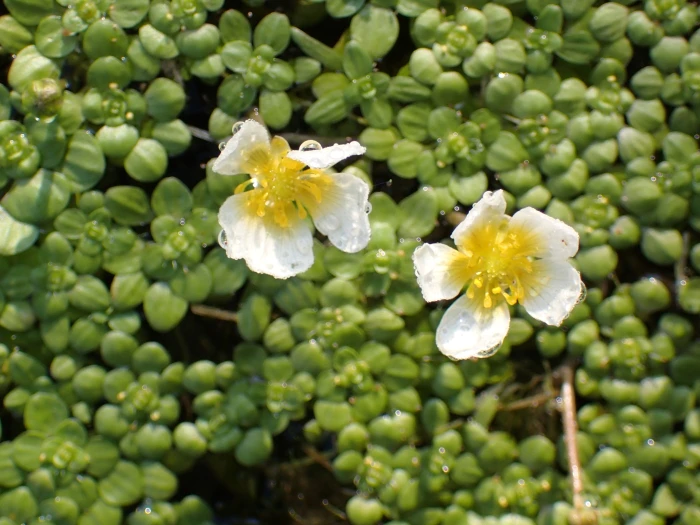Longbeak Buttercup
(Ranunculus longirostris)
Longbeak Buttercup (Ranunculus longirostris)
/
/

© Rob Foster
CC BY 4.0
Image By:
© Rob Foster
Recorded By:
Copyright:
CC BY 4.0
Copyright Notice:
Photo by: © Rob Foster | License Type: CC BY 4.0 | License URL: http://creativecommons.org/licenses/by/4.0/ | Uploader: rob21 | Publisher: iNaturalist |

























Estimated Native Range
Climate Requirements for Amagasaki, Japan
| This Plant | Your Site | Plant Suitability for Your Location | ||
|---|---|---|---|---|
| • Precipitation | 4" - 97" | 54" | Aquatic | Aquatic |
| • High Temp. | 30°F - 100°F | 91°F | Your summer temperatures are normal for this plant. | Excellent |
| • Low Temp. | -43°F - 37°F | 34°F | Your winter temperatures are normal for this plant | Excellent |
This plant should grow well at your location with about N inches per year (Y minutes per month) of irrigation.
Summary
Ranunculus longirostris, commonly known as the Longbeak Buttercup, is an aquatic perennial herb native to freshwater habitats such as ponds, lakes, ditches, and slow-moving streams across Canada and the United States, though it is less common in the Southeastern US. It typically grows submerged or partially floating in water. The Longbeak Buttercup is characterized by its elongated snout-like beak, which is a distinctive feature of the fruit. It produces small, yellow flowers that are not particularly showy, blooming from late spring to mid-summer. The plant’s foliage is usually finely dissected and submerged, with floating leaves being less divided.
The Longbeak Buttercup is valued for its role in aquatic and riparian ecosystems, providing habitat and food for various wildlife species. It is not commonly used in traditional garden settings due to its aquatic nature but can be incorporated into water gardens or naturalized pond edges. It requires full sun to part shade and prefers to grow in shallow water or saturated soil. While not a common garden plant, it can be a unique addition to water features. Care should be taken to manage its growth as it can spread in favorable conditions, potentially becoming invasive.CC BY-SA 4.0
The Longbeak Buttercup is valued for its role in aquatic and riparian ecosystems, providing habitat and food for various wildlife species. It is not commonly used in traditional garden settings due to its aquatic nature but can be incorporated into water gardens or naturalized pond edges. It requires full sun to part shade and prefers to grow in shallow water or saturated soil. While not a common garden plant, it can be a unique addition to water features. Care should be taken to manage its growth as it can spread in favorable conditions, potentially becoming invasive.CC BY-SA 4.0
Plant Description
- Plant Type: Herb
- Height: 0.5-1 feet
- Width: 0.5-1 feet
- Growth Rate: Moderate
- Flower Color: White, Yellow
- Flowering Season: Spring, Summer, Fall
- Leaf Retention: Deciduous
Growth Requirements
- Sun: Part Shade, Full Shade
- Water: High
- Drainage: Standing
Common Uses
Bee Garden, Butterfly Garden, Low Maintenance, Water Garden
Natural Habitat
Freshwater habitats such as ponds, lakes, ditches, and slow-moving streams
Other Names
Common Names: Longbeak buttercup, Water crowfoot, Long-Beak Water-Crowfoot, Curly White Water-Crowfoot
Scientific Names: Ranunculus longirostris, Batrachium circinatum subsp. subrigidum, Batrachium circinatum var. subrigidum, Batrachium longirostre, Batrachium longirostris, Batrachium subrigidum, Batrachium usneoides, Ranunculus amphibius, Ranunculus aquatilis var. longirostris
GBIF Accepted Name: Ranunculus longirostris